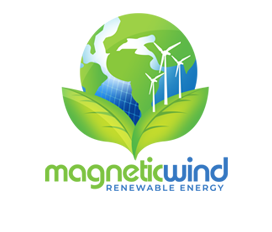ABOUT WIND ENERGY
ABOUT WIND ENERGY
How Wind Energy Works
Wind energy harnesses the natural movement of air to create clean, renewable electricity. It’s a simple concept powered by decades of engineering innovation.
The Basics
Wind turbines may look simple from a distance, but inside each one is a carefully engineered system designed to transform moving air into usable electricity. The process begins with the blades capturing the kinetic energy of the wind, which is then converted into mechanical rotation and passed through the turbine’s drivetrain. Finally, the generator turns that motion into clean, renewable power that can be supplied to a home, business, or the wider electrical grid. This three-step process — capture, rotation, and output — is the foundation of modern wind energy.
Did you know? Modern turbines start generating at ~3–4 m/s wind speed and safely shut down in extreme winds.
Where it works best: Open areas, coastal corridors, ridgelines, and sites with minimal obstructions.
For small/medium installs: Hybrid setups pair wind with solar + battery storage to smooth day-night and seasonal variability.
Wind Capture
Turbine blades are designed to capture kinetic energy from the wind.
Aerodynamic blades (similar to airplane wings) create lift as wind flows over them. This lift turns the rotor even at low-to-moderate wind speeds, which are common across much of the Middle East. Modern control systems yaw the nacelle (the housing at the top) to face the wind and pitch the blades to the best angle, maximizing energy capture while staying safe during high gusts.
Rotation to Power
The rotation turns a shaft connected to a generator.
The rotor spins a low-speed main shaft inside the nacelle. In many turbines, that shaft passes through a gearbox that increases the rotational speed for the generator; in direct-drive designs, the gearbox is removed to reduce maintenance. Sensors continuously monitor vibration, temperature, and wind conditions to keep performance high and downtime low.
Electricity Output
Generators convert this motion into electrical power, which is then fed into a home, business, or grid.
Inside the generator, mechanical rotation induces an electric current (Faraday’s law). Power electronics condition the electricity—matching grid frequency and voltage—and a transformer steps up voltage for efficient transmission. In smaller systems (residential or commercial sites), power can be used on-site, stored in batteries, or exported to the utility grid under local interconnection rules.
